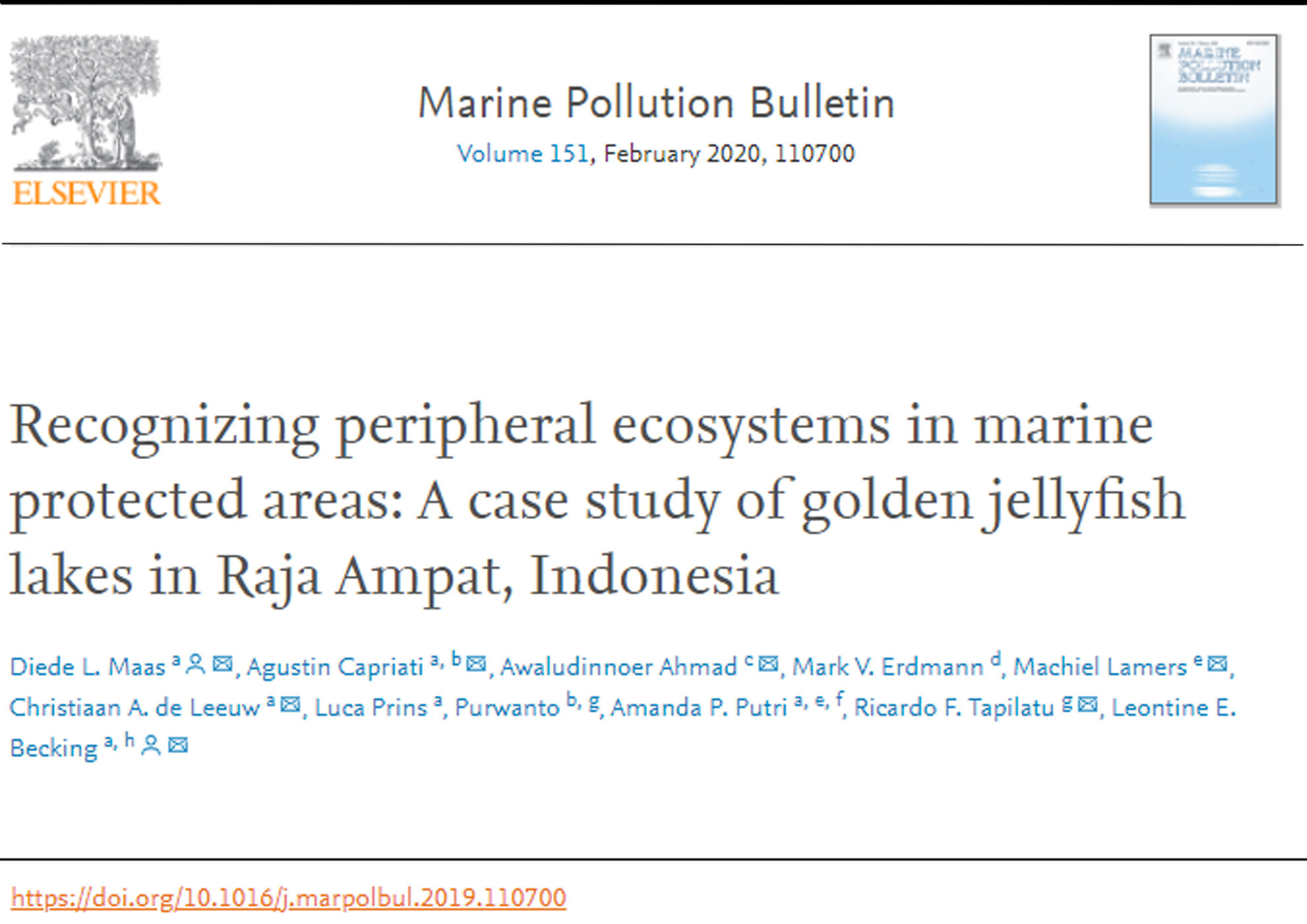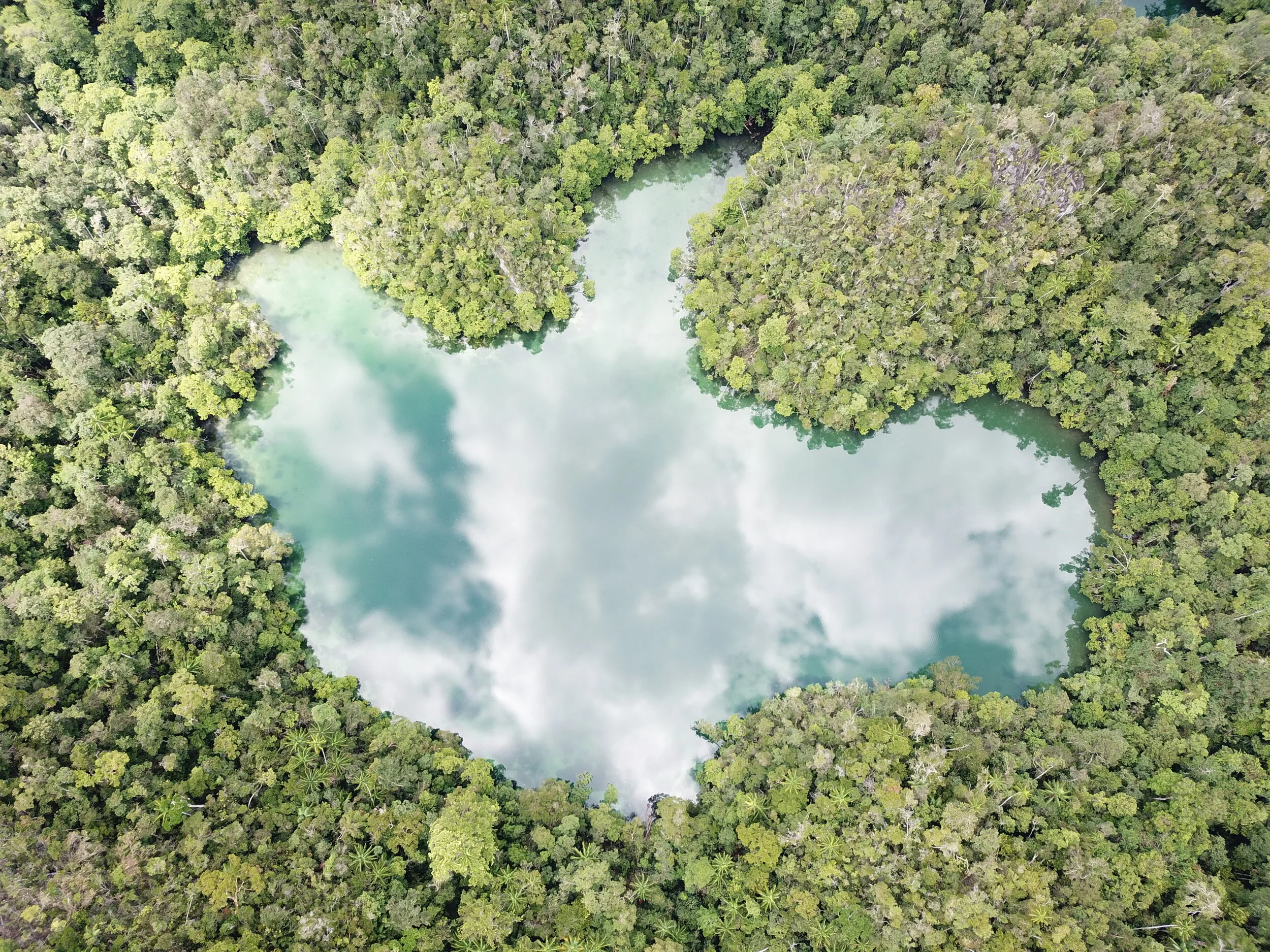
Marine lakes can be seen as natural laboratories: they allow us to research different aspects of ecology and evolution



















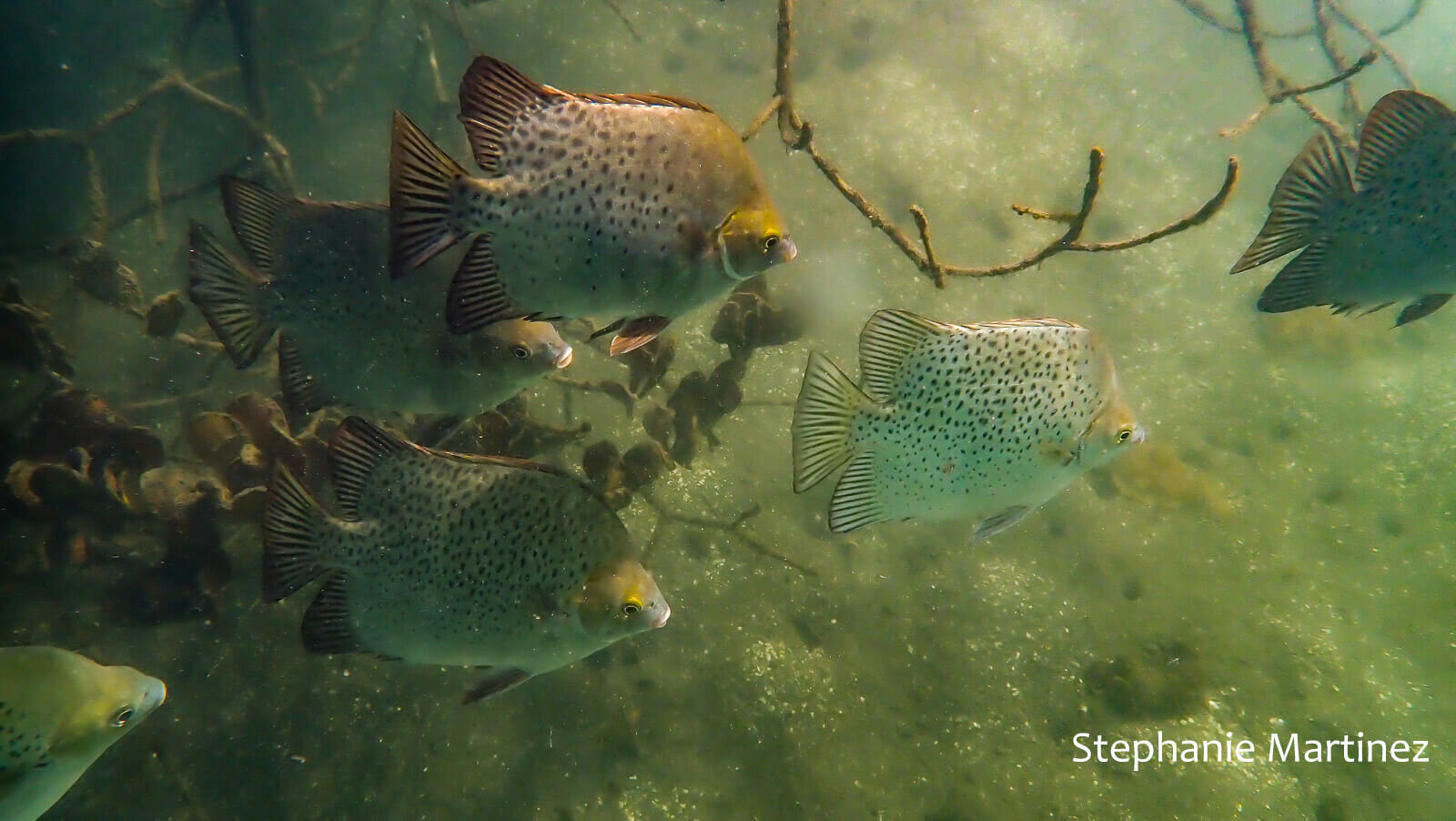

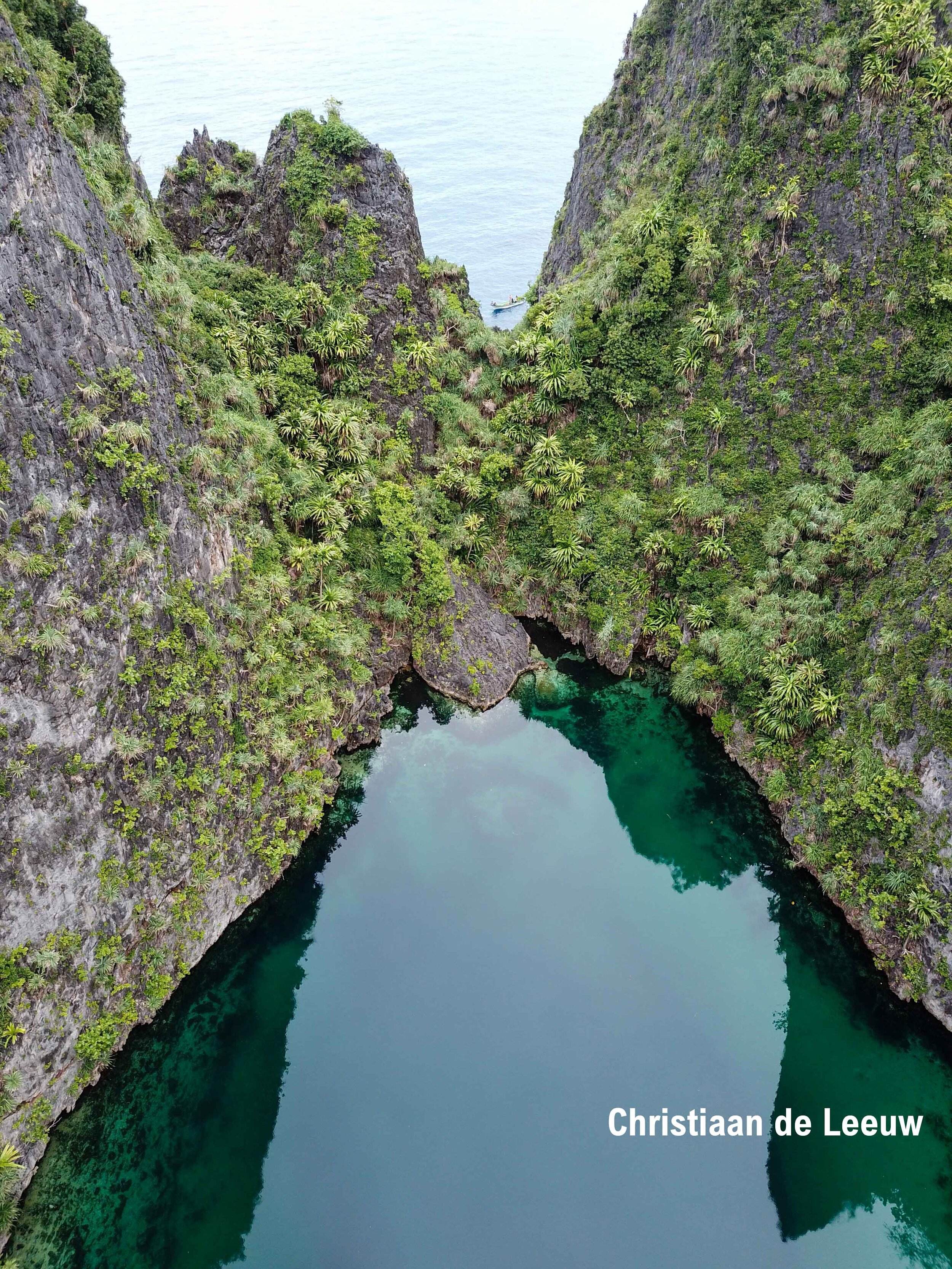




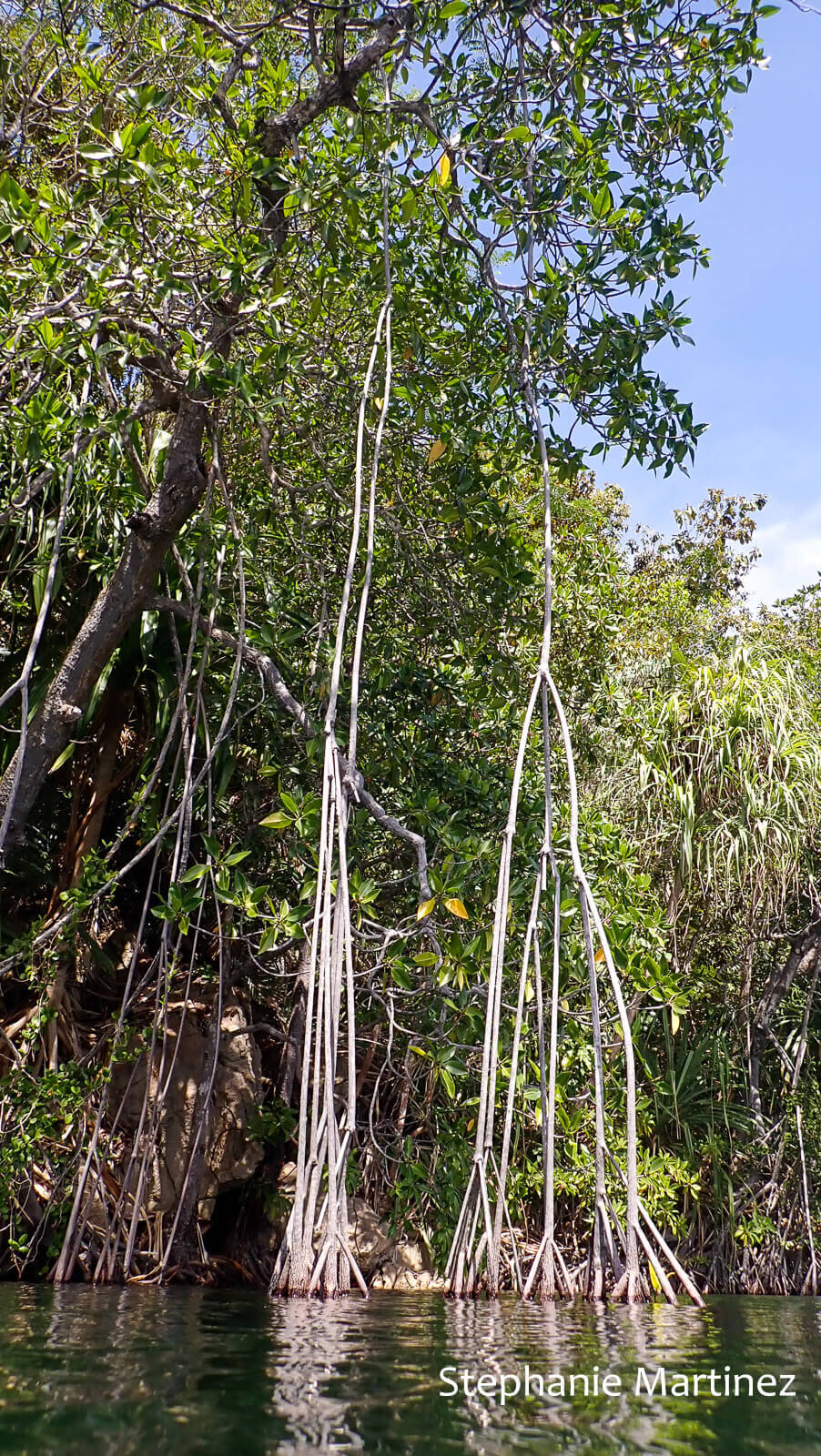





About the lakes
Bodies of seawater completely surrounded by land
Connected to the surrounding ocean via subterranean channels
Formed 6,000 - 12,000 years ago with the rise of seawater level
Only ~200 marine lakes are known worldwide, where more than 30 lakes are clustered in Indonesia
Each lake’s natural history and level of connection to the ocean result in different temperature, salinity, pH and biodiversity
Less than 20 marine lakes are known as
Jellyfish Lakes

Threats
Jellyfish lakes face multiple threats:
Aquaculture
Some marine lakes are used as fish ponds, which has high impacts on all biota.Climate change
Global warming may influence jellyfish abundance and healthUnregulated tourism
High numbers of tourists are known to have dire effects
on jellyfish populations
Conservation
In order to protect jellyfish lakes, the team is working together with the government of Indonesia to form a conservation and management plan specifically for jellyfish lakes. Furthermore, we work on educating local homestays, liveaboards, and live resorts to educate tourists on the do’s and don’ts when visiting a jellyfish lake.
The informational flyers about the jellyfish lakes and the code of conduct when visiting them can be found in English (here and here) and Bahasa (here and here)
Monitoring project
We have set up a long-term monitoring program with the University of Papua. We monitor jellyfish populations in marine lakes over time. Two to four times a year, a team of students, people from NGOs, and scientists visit jellyfish lakes to study the following characteristics:
Jellyfish abundance. This is done via video transects.
Jellyfish morphology. We are interested whether size distributions fluctuate. Furthermore, morphology also gives information on jellyfish health.
Benthic biodiversity. Benthic populations may affect jellyfish populations.
Water quality. These include water temperature, pH, dissolved oxygen content and salinity.





